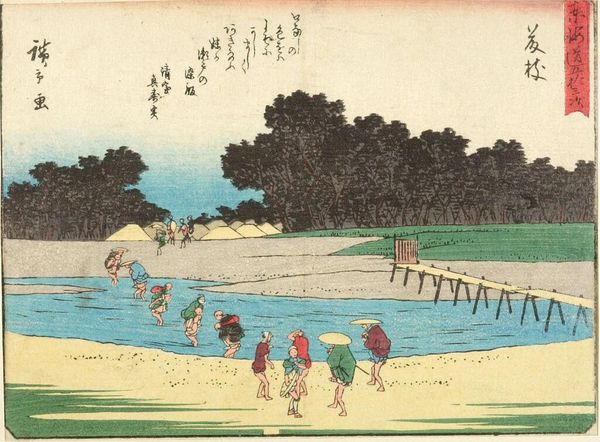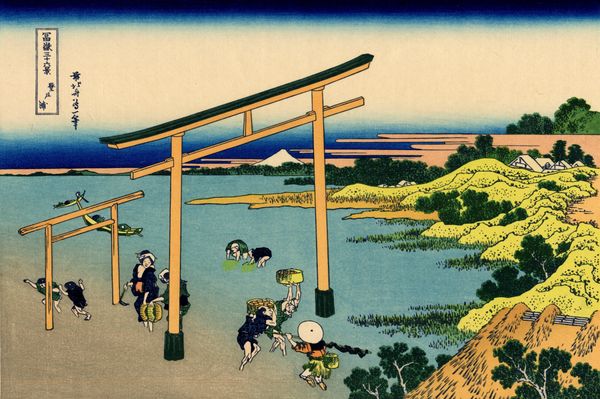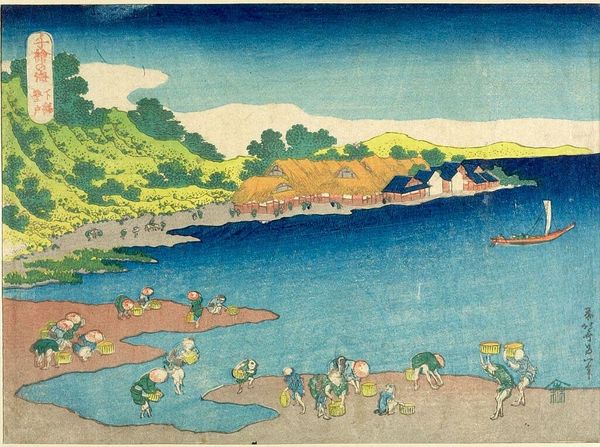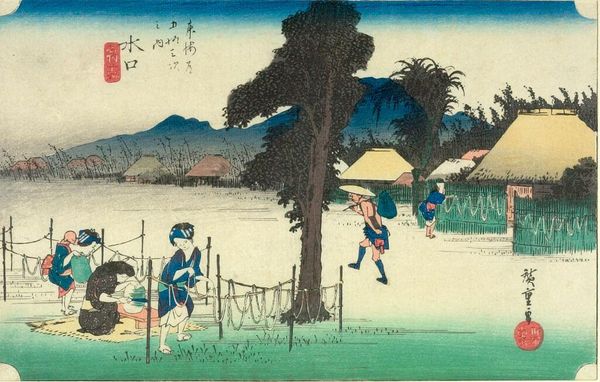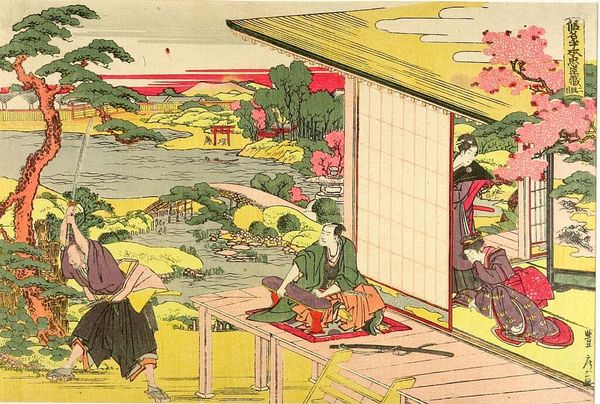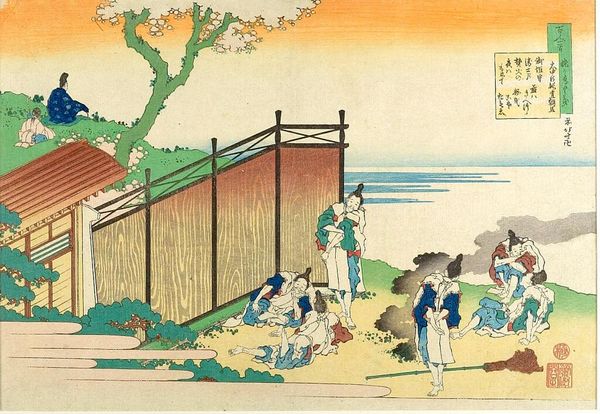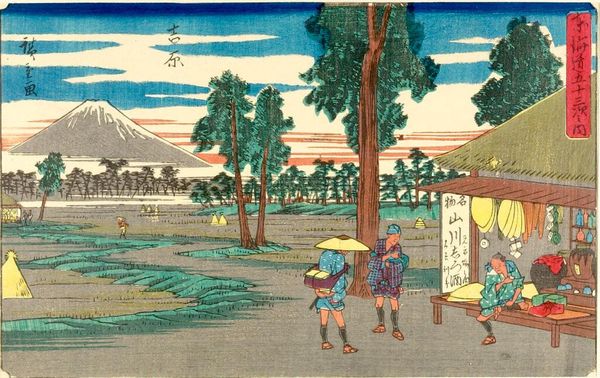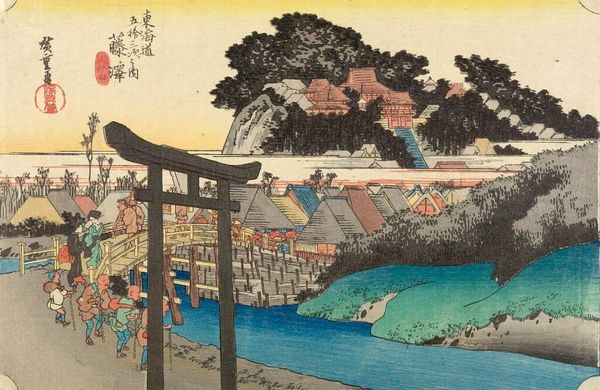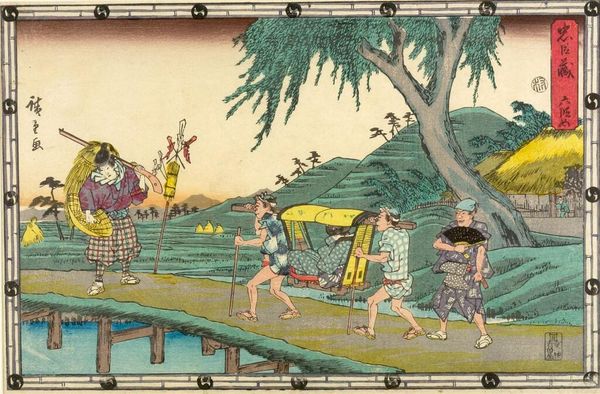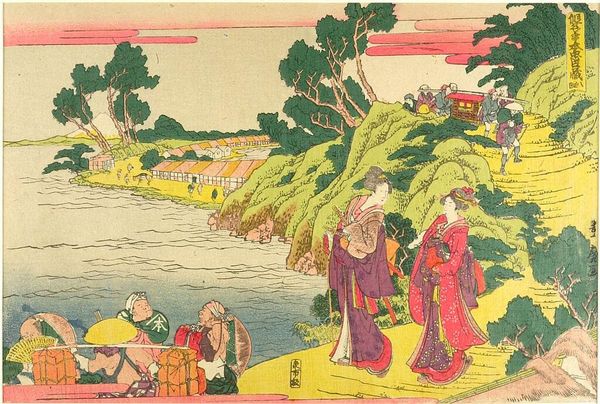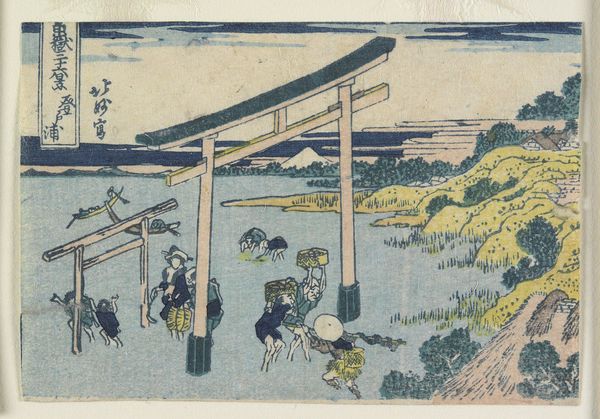
The Coast of Noboto (Noboto ura), from the series Thirty-Six Views of Mount Fuji (Fugaku sanjūrokkei) c. 1831
0:00
0:00
Dimensions: 24.8 x 36.6 cm (9 3/4 x 14 7/16 in.)
Copyright: CC0 1.0
Curator: Hokusai's woodblock print, "The Coast of Noboto" showcases a tranquil scene, doesn’t it? The formal elements—the linear perspective, the blocks of color—create a very harmonious composition. Editor: I see it more as a visual poem about labor, gender, and landscape. These figures navigating the shallows, perhaps gathering seaweed, suggest a story of resilience and survival in coastal communities. Curator: Observe how the torii gates frame Mount Fuji in the distance, drawing the eye through distinct planes. The composition emphasizes the structural interplay between the architecture and nature. Editor: Yet, these gates also carry socio-political weight, marking boundaries, both physical and spiritual. How do they regulate movement and access for the people depicted within the frame? Curator: Well, the application of color is equally deliberate. The varying blues in the sky and water, the greens of the landscape, contribute to an overall sense of serenity. Editor: And that serenity masks the everyday realities of those whose livelihoods depended on the sea. It’s crucial to consider power dynamics in this seemingly idyllic landscape. Curator: Ultimately, Hokusai masterfully employs formal elements to capture a fleeting moment. The Coast of Noboto is a testament to his artistic brilliance. Editor: Indeed, a closer look reveals layers of meaning beyond the purely aesthetic, inviting us to engage with the human stories interwoven within.
Comments
No comments
Be the first to comment and join the conversation on the ultimate creative platform.
